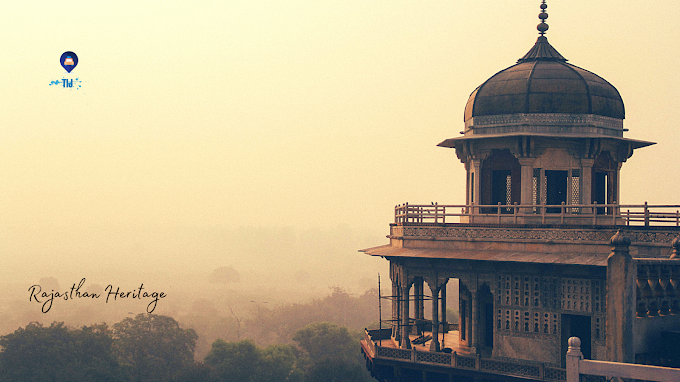Ranthambore Tiger | Reserve | Rajasthan | India
Ranthambore | The Most Famous Place in Rajasthan | India
Spread in an area of 392 sq. Km, the Ranthambore Tiger Reserve is one among the largest and famed tiger reserves inside us of a well-known for the remarkable Bengal Tiger observed there. The Ranthambore Tiger Reserve derives its call from the Ranthambore Fort located in the area. Situated inside the Sawai Madhopur district of Rajasthan, it paperwork part of Project Tiger reserves, with the aid of the Government of India, installation in 1955. Ancient nonsecular ruins found within the wooded area, surrounded with the aid of the rich biodiversity and aesthetically crumbling cenotaphs make Ranthambore Tiger Reserve a fave spot for photographers, natural world lovers, and travelers.
Among different things, the tiger reserve is thought for the medieval hunting trips carried out by way of the royals of Jaipur while looking a tiger became the symbol of valor. One can take a safari trip through the jungle and experience watching a tiger in its natural habitat from a few meters away. Dry deciduous forests and marshy grassland paperwork a distinctive function of this region with the Aravalli Range and Vindhya Plateau surrounding it to set it aside from the strikingly one of a kind desert inside the very identical state. The Ranthambore Tiger Reserve is also domestic to a huge type of plants and fauna. The Sawai Man Singh Sanctuary and Kaldevi Sanctuary that surrounds this tiger reserve have become part of the tiger reserve assignment within the Nineteen Nineties.
Explore more in Places in Ranthambore and Rajasthan with Cab Service in Jodhpur and Taxi Service in Jodhpur Also Rental car also Available Car rental in Jodhpur.
History | Ranthambore Tiger | Rajasthan | India
The Ranthambore Tiger Reserve become owned by way of the Maharaja of Jaipur and changed into the exceptional searching floor for the royals of the kingdom. But there has been no considerable harm to this kind of large woodland and its rich wildlife species due to the occasional hunting exercise because of the much less number of royals. The residents of the villages around the woodland have been allowed to take the wooded area produces after paying a nominal yearly tax to the kingdom's treasury. However, as the population density around the woodland turned into very low, there was hardly any effect at the woodland due to human interference.
After independence, due to the extreme exploitation of the wooded area inside u. S. A ., the government realized the need for woodland conservation rules. Thus, in 1953, the Rajasthan forest act got here into the force to provide a few prison safety to the forests in Rajasthan. In 1955, the entire woodland cowl around Ranthambore become declared because the Sawai Madhopur Sanctuary and industrial pastime in the wooded area became absolutely prohibited. However, this was still now not sufficient and the fiercest predator of the cat circle of relatives changed into on the verge of extinction in the united states. Thus, the government instigated the Project Tiger in 1973. A region of 60 sq.Miles of Sawai Madhopur Sanctuary turned into taken below the project Tiger Scheme and the place becomes declared because of the Tiger Reserve vicinity.
Animals | Ranthambore Tiger Reserve | Rajasthan | India
Flora inside the Reserve
The vegetation of the park includes 539 species of flowering plant life. Due to the terrain, the vicinity receives insufficient rainfall, and therefore, the vegetation is marked through being dry deciduous. The vegetation determined in most of the people is called ‘Dhok’ at the same time as other timber consisting of Am, Imli, Babul, Banyan, Ber, Chila, Jamun, Kaam, Khajur and Khair also are available in plenty. Dhok trees are capable of surviving long periods without water and therefore, located in abundance because the region is at risk of drought. It is also believed that the country’s oldest Banyan bushes are observed in this tiger reserve. However, really worth-watching is the ‘Flame of the Forest’ that's an unseasonal bloom amid the arid situations.
Migratory Birds
Due to the variation in topography and availability of water our bodies, Ranthambore is understood for its migratory as well as resident birds. 272 species of birds were identified in general which include Graylag Goose, Woodpeckers, Indian Gray Hornbills, Owl, Nightjars, Pigeon, Dove, Crakes, Snipes, Sandpipers, Gulls, Eagles, Darters, Storks, Pittas, Shrikes,
Animals
Indian Wild Boar, Chinkara, Common Palm Civets or Toddy cat, , Indian Porcupines, Macaques, Jackals, Jungle cats, Common Yellow Bats, Desert Cats, Five striped Palm Squirrels, Indian False Vampires, Long-eared Hedgehogs, Ratels, Small Indian Mongoose, Small Indian Civets, and Common mongoose. Common India Toad and the Common Frog are a few of the amphibian species discovered. The park also has a huge number of marsh crocs reptiles: Snub-Nosed Marsh Crocodiles, Common Kraits, Ganga Soft Shelled Turtles, Banded Kraits, Cobras, Russel's Vipers, Saw-scaled Vipers Indian Pythons, North Indian Flap Shelled Turtles, Rat Snakes, Desert Monitor Lizards, Tortoise, and the Indian Chamaeleon. However, the park is most well-known for its diurnal tigers.
How to Reach | Ranthambore | Tiger Reserve | Rajasthan | India
The nearest airport to the Ranthambore is the Jaipur International Airport, placed 180 km from the wooded area. Taxi, cabs, and buses are frequently to be had from the airport to Ranthambore Tiger Reserve. Sawai Madhopur Railway station is the closest rail station to Ranthambore Tiger Reserve, that's 14 km from the forest. The station is a primary station having many direct trains from the important cities in North India. Rajasthan Tourism Department and lots of non-public operators offer road transport services to Ranthambore. It is attached to all of the foremost towns in and around Rajasthan. Local buses, cabs, and personal vehicle services are with ease available within the region.
Stay tuned Stay Safe






0 Comments